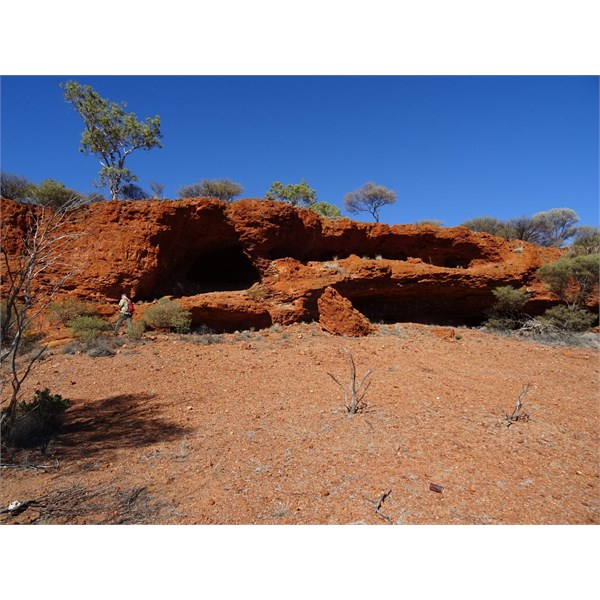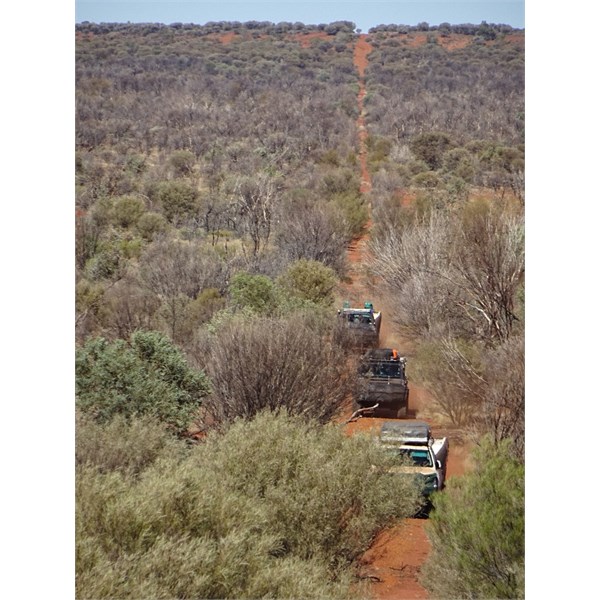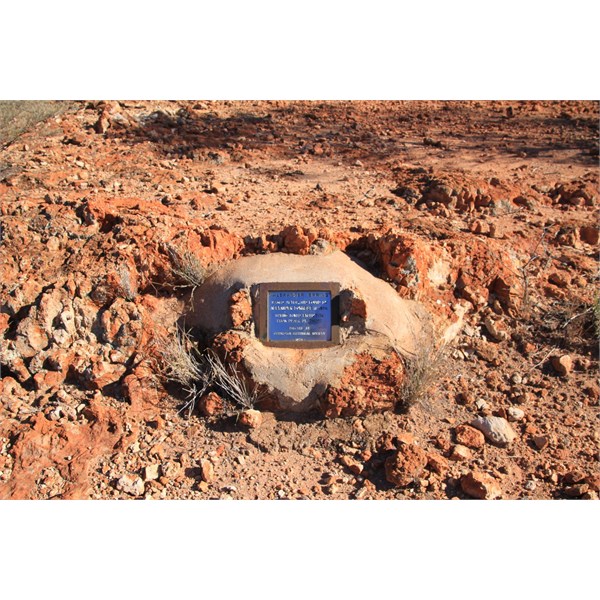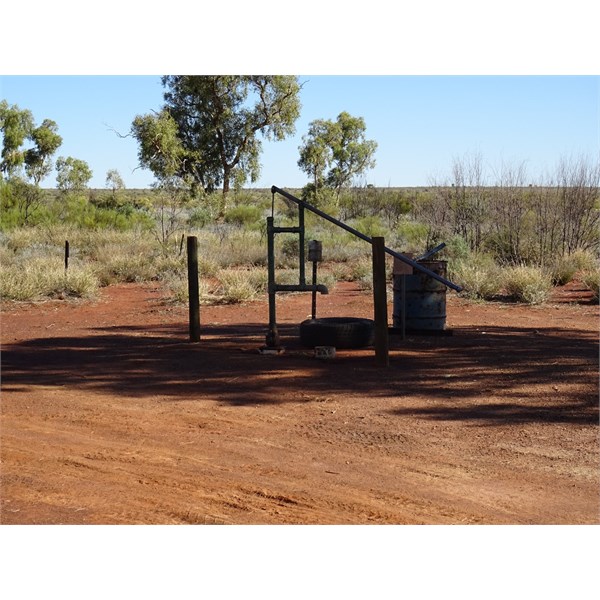The
Hunt Oil Road - A potted history.
The Hunt Oil Rd is an abandoned exploration track, cleared by the Hunt Oil Company in the 1960’s, that runs south from
Geraldton Bore, on the Gunbarrel Hwy, to the Great Central Rd between Tjukayirla and
Warburton. The Hunt Oil Rd is about 263 km long and is one of a few ways to access the
Great Central Road from the Gunbarrel Hwy; other options being the David
Carnegie Rd (
Eagle Hwy) to the west, and the Heather Hwy to the east.

Caves on the Hunt Oil Road
The
Hunt Oil Road splits across the north western arm of what in geological terms is known as the 'Officer Basin'. The Officer Basin covers over 350 000 km2 of South and Western Australia. Fully 250,000 km2 of the basin lies across the Gibson and Great Victoria Deserts in Western Australia. As a result, the natural environment is regarded as harsh desert, with low and irregular rainfall, and extremely hot conditions in the summer months. Landforms comprise undulating plains, laterite outcrops and extensive dunefields (
Great Victoria Desert) with vegetation of low open
woodlands, grasslands and spinifex scrub.
A number of significant exploration ventures have been undertaken across the region and a large dataset is available to the public. The earliest recorded geological investigation of the area was carried out in 1916 by H. W. B.
Talbot and E. C. Clarke as representatives of the Western Australian Government.
Talbot and Clarke passed through the area en route from
Laverton to the
Warburton Range, conducting several traverses between
Laverton and the South Australia border. The main purpose of the expedition was the investigation of reported mineral-bearing rocks near the
Warburton Range. Their published works on the area remained the definitive study until the rush of oil and mineral exploration that commenced in the 1960’s.

Heading out to the old hunt oil camp
The Hunt Oil — Placid Oil — Exoil Consortium undertook a major program of petroleum exploration in the Officer Basin between 1961 and 1966. They concentrated their effort in the area southwest of
Warburton, which they considered was the deepest part of the basin. Reconnaissance aeromagnetics in 1961 was followed by a major gravity survey and detailed seismic surveys between 1963 and 1965, culminating in stratigraphic drilling in 1965 and 1966. During the surveys, 15 000 km of track were cleared by bulldozers, some 35 265 gravity stations were established, and 1794 stations were permanently marked. The interpretation of the drilling results led to the
suspension of operations. Pour shallow
test wells (maximum depth 614 m) and one stratigraphic
well (990 m deep) were drilled .
Additional aeromagnetic and geological surveys were done in the northern part of the basin as part of other petroleum exploration programs but none of these reports were published.

Windmill and bore at Hunt Oil Camp
While many of the scars left from the gravity and seismic surveys have long been subsumed by the relentless desert, the
Hunt Oil Road remains as a lasting reminder of this push into a harsh, remote area in search of mineral wealth. The variety and wealth of the ecosystems the road traverses is astounding as is the rich history of both the original inhabitants of the land, and the many European
explorers who crossed these lands including;
• Ernest Giles (1873)
• William Christie Gosse (1873)
•
John and Alexander Forest (1874)
• Calvert Expedition (1896)
• David W.
Carnegie (1896/97)
2016 will be the 50th (or 55th) year of the
Hunt Oil Road's existence.

Mt Worsnop in the late afternoon

Mt Allot

Alexander Spring

Wreck of the Engel

Alexander Spring Plaque

Geraldton Bore